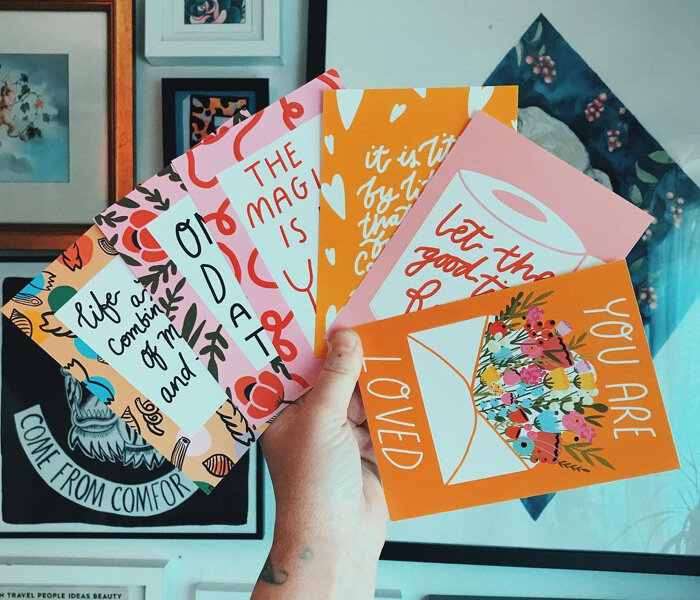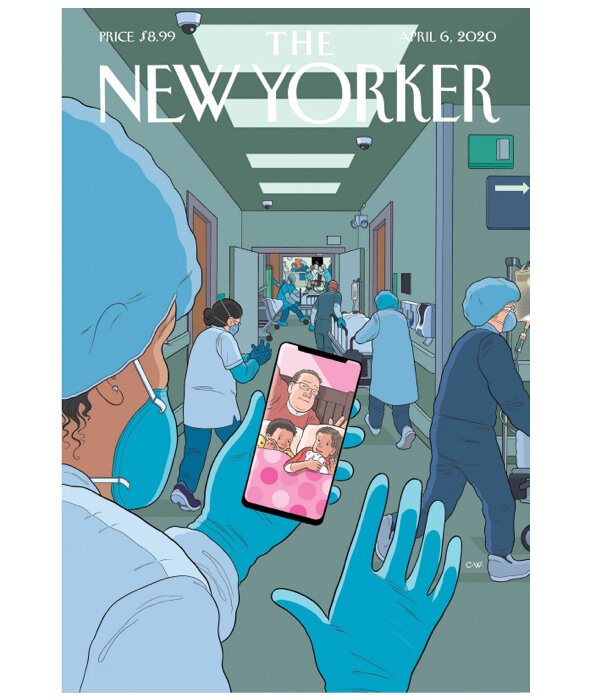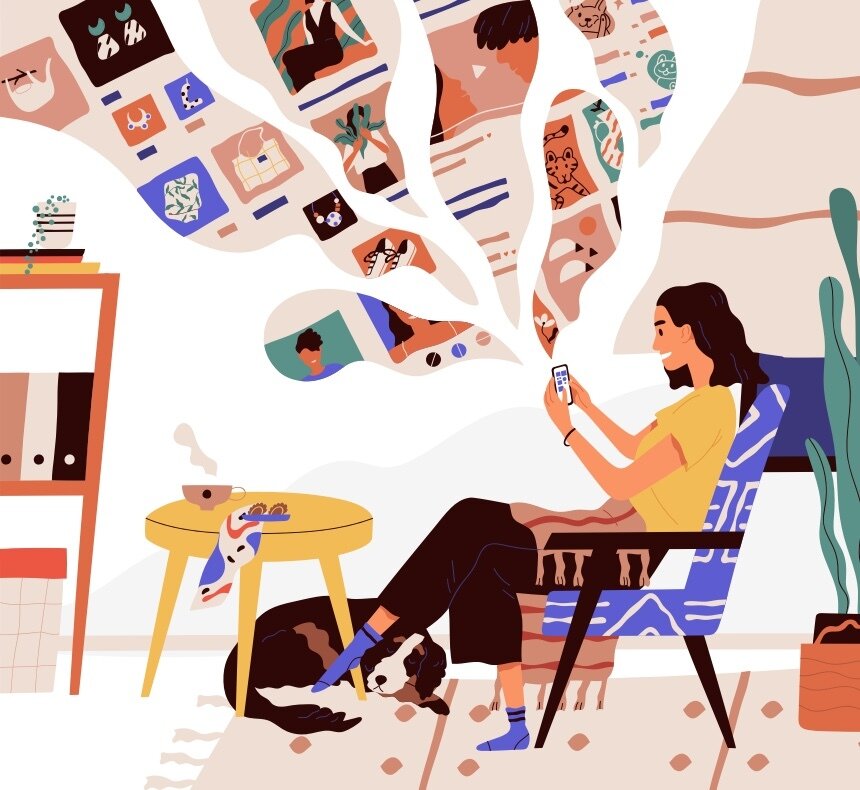If there’s one thing to learn from the pandemic, it’s that people are surprisingly alike. No matter what divides us, we adapt and ultimately, want to do our bit to support each other through times of crisis. This is also true of the world of illustration. Whether we’re learning about COVID symptoms from an illustrated infographic poster on the bus, or drawing rainbows on our windows to celebrate our front-line workers, it’s fair to say that illustration has played a part in helping us through this pandemic.
Finding comfort
Art can provide comfort in times of crisis. With mental health concerns rising and negative news seemingly bombarding us at every turn, there’s been an unconscious or conscious urge to surround ourselves with safe and comforting messages. Perhaps, as a result, there’s been a rise in the trend of simplified illustrations; with the emergence of softer colour palettes, minimal line artwork, charming character designs, and soothing, organic shapes. It’s fair to say that we’ve taken a U-turn from 2019’s bolder, more disruptive trends. Many illustrators have addressed our collective anxiety in a way that has provided us with this comfort that we’ve been longing for. For example, illustrator Ella Masters’ ‘Positive Postcard Collection’ aimed to restore a level of human connection via her bright and optimistic postcard illustrations. Even in a world of rising digital, going months without human touch has meant that tangible, printed sentiments are providing a deeper level of connection that screens cannot.


Communicating Information
Studies have found that visuals increase an audience’s ability to retain important information. Illustrated infographics and data visualisation have proved to be invaluable communication tools as they are universally understood and convey mass information concisely and efficiently. They’ve been relied on heavily during this time, most notably by reputable sources such as The World Health Organisation. Even in a less official setting such as Instagram, infographic illustrations have proved helpful in spreading awareness and communicating lifesaving information. Mona Chalabi’s illustration series shares advice on isolation, symptoms, and stockpiling. With Instagram now attempting to monitor false information, it’s become a way for illustrators to collectively spread awareness and communicate on a wide-scale platform. A lot of these posts seem to be adopting tongue in-cheek humour and ‘ignorant’ illustration styles. Ignorant illustration is a trend that voluntarily tries to produce an almost child-like, hand-drawn result that disregards convention. This style has become increasingly popular during the pandemic, again tying in with the notion of society craving comfort and softness during this time.

Due to social distancing regulations and privacy laws, there’s even been an upturn in the use of illustration as a communication tool in place of photography. For example, Chris Ware illustrated the cover for the New Yorker’s Health Issue, ‘Bedtime’ which displayed the grim reality of the life of front-line workers on the wards. Not only was illustration the only viable and legal option with this concept, but the intended shock factor was achieved without the insensitive or distasteful result that photography may have produced.
It may have gone unnoticed, but illustration has been important to us this past year. Whether it be to comfort us in times of anxiety or communicate life-saving information, it’s helped us to navigate through our new reality. And as always throughout history, art has helped to unite us in a time of crisis, to remind us that we share a universal human experience, and we are not alone.





